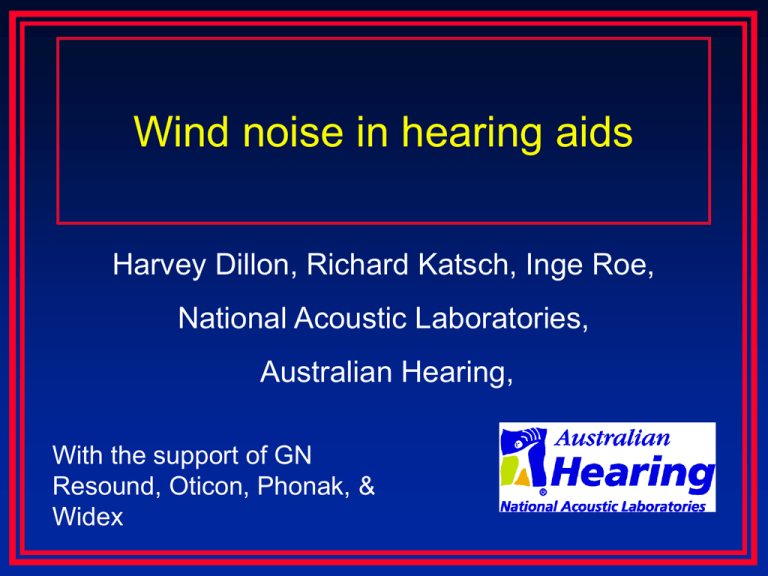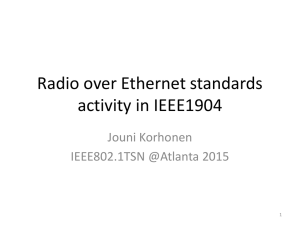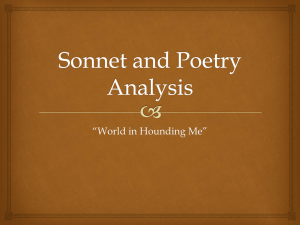wind noise - National Acoustic Laboratories
advertisement

Wind noise in hearing aids Harvey Dillon, Richard Katsch, Inge Roe, National Acoustic Laboratories, Australian Hearing, With the support of GN Resound, Oticon, Phonak, & Widex The problem Wind + hearing aid = noise But why, and how, and how bad is the problem? Dillon, Roe & Katsch, NAL. Turbulence U L f = US/L (Hz) S = Strouhal number Dillon, Roe & Katsch, NAL. 1/3 octave level (dB SPL) Spectrum of noise behind wire 110 100 90 80 1 cm 2 cm 4 cm mic alone 70 60 50 25 50 100 200 400 800 1600 3150 6300 Frequency (Hz) Dillon, Roe & Katsch, NAL. Laser Doppler Velocimeter Dillon, Roe & Katsch, NAL. Velocity down the wind tunnel (CIC aid) Dillon, Roe & Katsch, NAL. Velocity out of head (CIC aid) Dillon, Roe & Katsch, NAL. Velocity upwards (CIC aid) Dillon, Roe & Katsch, NAL. Turbulent velocity (CIC aid) Dillon, Roe & Katsch, NAL. Turbulent velocity (ITE aid) Dillon, Roe & Katsch, NAL. Turbulent velocity (BTE aid) Dillon, Roe & Katsch, NAL. Effect on turbulence of distance from head Dillon, Roe & Katsch, NAL. Solution 1: Extend the microphones Dillon, Roe & Katsch, NAL. Wind velocity inside and outside the concha Dillon, Roe & Katsch, NAL. Turbulence in the concha Tragus Dillon, Roe & Katsch, NAL. Sensitivity of ITC Tragus Dillon, Roe & Katsch, NAL. Smoothness of ITE Tragus Dillon, Roe & Katsch, NAL. Noise measurements: Specially designed wind-tunnel. Noise measurements: Outlet of Wind Tunnel Noise measurements: Outlet of Wind Tunnel z x y Wind velocity 5 m/sec 18 km/hr 11 m.p.h. Level 3 on 13 point Beaufort Scale Flags unfurl but droop Scattered whitecaps Gentle Breeze Exceeded 6% of time Dillon, Roe & Katsch, NAL. 1/3 octave level (dB SPL) Noise at BTE position 100 90 -90 -60 -30 0 30 60 90 80 70 60 50 40 25 50 100 200 400 800 1600 3150 6300 Frequency (Hz) Dillon, Roe & Katsch, NAL. 1/3 octave level (dB SPL) Aid comparison at 0 degrees 100 90 80 BTE ITE ITC CIC 70 60 50 40 25 50 100 200 400 800 1600 3150 6300 Frequency (Hz) Dillon, Roe & Katsch, NAL. KEMAR at 0 degrees to wind Dillon, Roe & Katsch, NAL. 1/3 octave level (dB SPL) Aid comparison at 30 degrees 100 90 80 BTE ITE ITC CIC 70 60 50 40 25 50 100 200 400 800 1600 3150 6300 Frequency (Hz) Dillon, Roe & Katsch, NAL. 100 90 BTE ITE ITC CIC BTE no ear 80 70 60 50 16 00 31 50 63 00 80 0 40 0 20 0 10 0 50 40 25 1/3 octave level (dB SPL) Aid comparison at 30 degrees Frequency (Hz) Dillon, Roe & Katsch, NAL. Solution 2: Dillon, Roe & Katsch, NAL. Solution 2: Remove the pinnae Dillon, Roe & Katsch, NAL. Solution 2: Remove the pinnae Dillon, Roe & Katsch, NAL. 1/3 octave level (dB SPL) ITE noise versus azimuth 100 90 80 100 Hz 200 Hz 2 kHz 70 60 50 -90 -60 -30 0 30 60 90 Aziimuth (degs) Dillon, Roe & Katsch, NAL. KEMAR at -50 degrees to wind Dillon, Roe & Katsch, NAL. 1/3 octave level (dB SPL) Aid comparison at -50 degrees 100 90 80 BTE ITE ITC CIC 70 60 50 40 25 50 100 200 400 800 1600 3150 6300 Frequency (Hz) Dillon, Roe & Katsch, NAL. 1/3 octave level (dB SPL) Aid comparison at -50 degrees 100 90 BTE ITE ITC CIC BTE no ear 80 70 60 50 40 25 50 100 200 400 800 1600 3150 6300 Frequency (Hz) Dillon, Roe & Katsch, NAL. Solution 3: Shed the vortices gracefully Dillon, Roe & Katsch, NAL. 1/3 octave level (dB SPL) ITE noise versus azimuth 100 90 80 100 Hz 200 Hz 2 kHz 70 60 50 -90 -60 -30 0 30 60 90 Frequency (Hz) Dillon, Roe & Katsch, NAL. KEMAR at -90 degrees to wind Dillon, Roe & Katsch, NAL. Solution 4: Keep the aid towards the wind Dillon, Roe & Katsch, NAL. ITE noise re CIC noise 10000 15 10 1000 5 dB 0 100 -5 -80 -60 -40 -20 0 20 40 60 80 -10 Dillon, Roe & Katsch, NAL. Factors affecting wind noise Levels are very intense Obstacles (head, pinna, tragus) act as: – Wind guards – Turbulence source – Turbulence shredder Large obstacles create low-freq turbulence – head Medium obstacles create mid-freq turbulence – pinna Small obstacles create high-freq turbulence – tragus, inlet port Dillon, Roe & Katsch, NAL. Other observations As wind speed increases: – noise levels increase – frequency spectrum extends upward Two microphone ports produce: – correlated noise if a common source (e.g. head or pinna) – uncorrelated noise if separate sources (e.g. inlet port) Dillon, Roe & Katsch, NAL. Potential solutions Wear one aid and orient the head Wear a scarf Don’t fit a BTE Don’t fit a fixed directional microphone Low distortion input circuitry – up to at least 110 dB SPL Low-cut filtering – especially over the vent-transmitted range Smooth design Electronic signal processing from multiple microphones Dillon, Roe & Katsch, NAL. For a copy of this talk, send an Email to: Research@NAL.GOV.AU









